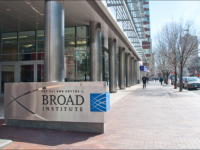There is a well-known patent dispute between University of California (UC), Berkeley and the Broad Institute of Harvard and MIT over use of the CRISPR-Cas9 system. That legal fight is unsurprising, given the billions of dollars at stake and the reality that academics want to be rich just like everyone else.
Tech
AUSTIN - (Feb. 16, 2018) - Scientists have successfully used gene editing to repair 20 to 40 percent of stem and progenitor cells taken from the peripheral blood of patients with sickle cell disease, according to Rice University bioengineer Gang Bao.
Bao, in collaboration with Baylor College of Medicine, Texas Children's Hospital and Stanford University, is working to find a cure for the hereditary disease. A single DNA mutation causes the body to make sticky, crescent-shaped red blood cells that contain abnormal hemoglobin and can block blood flow in limbs and organs.
Multicellular organisms like ourselves depend on a constant flow of information between cells, coordinating their activities in order to proliferate and differentiate. Deciphering the language of intercellular communication has long been a central challenge in biology. Now, Caltech scientists have discovered that cells have evolved a way to transmit more messages through a single pathway, or communication channel, than previously thought, by encoding the messages rhythmically over time.
Marit Bjoergen is a Norwegian cross-country skier who has won six Olympic gold medals, 18 World Championship gold medals and 110 World Cup victories. The 37-year old is competing in the 2018 Olympics in PyeongChang and is already the most decorated female Winter Olympian ever.
Wouldn't it be fun to peek behind the curtains to know how she trains? A team of researchers from the Norwegian University of Science and Technology and Nord University has done just that.
Bird-human actions can end in tragedy -- for bird as well as human.
John Swaddle believes technology and a solid understanding of bird behavior can make those tragedies less frequent.
Swaddle is a behavioral biologist at William & Mary. He briefed attendees at the annual meeting of the American Association for the Advancement of Science on developments in a pair of initiatives designed to minimize unpleasant results of bird-human interactions.
Put 50 newborn worms in 50 separate containers, and they'll all start looking for food at roughly the same time. Like members of other species, microscopic C. elegans roundworms tend to act like other individuals their own age.
It turns out that the innate system that controls age-appropriate behavior in a developing worm is not entirely dependable, however. Despite sharing identical genes and growing up in similar environments, some individual worms will inevitably march to the beat of their own drum.
The Israeli biotech SuperMeat, which makes lab-grown chicken, has raised $3M in seed funding and has formed a strategic partnership with PHW, one of Europe’s largest poultry producers. Two years ago Supermeat crowdfunded $230,000 using Indiegogo.
WattUp wire-free, power-at-a-distance charging technology has been given Federal Communications Commission (FCC) certification of its first-generation WattUp Mid Field transmitter, which sends focused, RF-based power to devices at a distance. This is the first FCC certification for power-at-a-distance wireless charging under Part 18 of the FCC's rules.
Fireworks are a key part of a wide number of public celebrations around the world, including Australia Day (January 26), the Festival of Sant Joan in Genoa, Italy (June 24), US Independence Day (July 4), Bastille Day (July 14), National Day in Signapore (August 9), Diwali in India (October), Guy Fawkes Night in the United Kingdom (November 5) and New Year’s Eve in Jakarta, Indonesia (December 31). But while they are a visual delight, fireworks are anything but innocuous.
WASHINGTON - Given the possible security vulnerabilities related to developments in synthetic biology - a field that uses technologies to modify or create organisms or biological components - a new report by the National Academies of Sciences, Engineering, and Medicine proposes a framework to identify and prioritize potential areas of concern associated with the field. This report is the first in a two-phase study that is examining the changing nature of biodefense threats in the age of synthetic biology, focusing on the degree to which it can be used to create a weapon.
Computer programmers want to develop early warnings and response systems for mosquito-borne epidemics, and they hope to make progress in a three-day meetup to develop a decision-making dashboard solution that helps health organizations to proactively meet the threat of future outbreaks of Zika, Dengue and Chikungunya.
Lab-grown cartilage grown shows similar mechanical and chemical properties to natural cartilage, which allows our joints to move smoothly, according to a new study.
The phase III trial datasets of Alemtuzumab have been published and show the drastic response of the immune system in patients with Multiple Sclerosis.
A special lung wash (surfactant) used in the care of premature babies could be getting a boost from spider silk. Surfactants help preterm babies by reducing the surface tension in the ends of the respiratory tree (pulmonary alveoli) and allowing them to be inflated at the moment of birth. Curosurf, the most globally widespread drug, is produced by the isolation of proteins from pig lungs, a process that is expensive, complicated and potentially risky.
Sepsis is a potentially life-threatening complication of bacterial infections.
Rapid diagnosis of sepsis in hospitalized patients is crucial because in severe cases because there is an average 7.6 percent decrease in survival rate per hour from the onset of low blood pressure without effective antimicrobial treatment.
